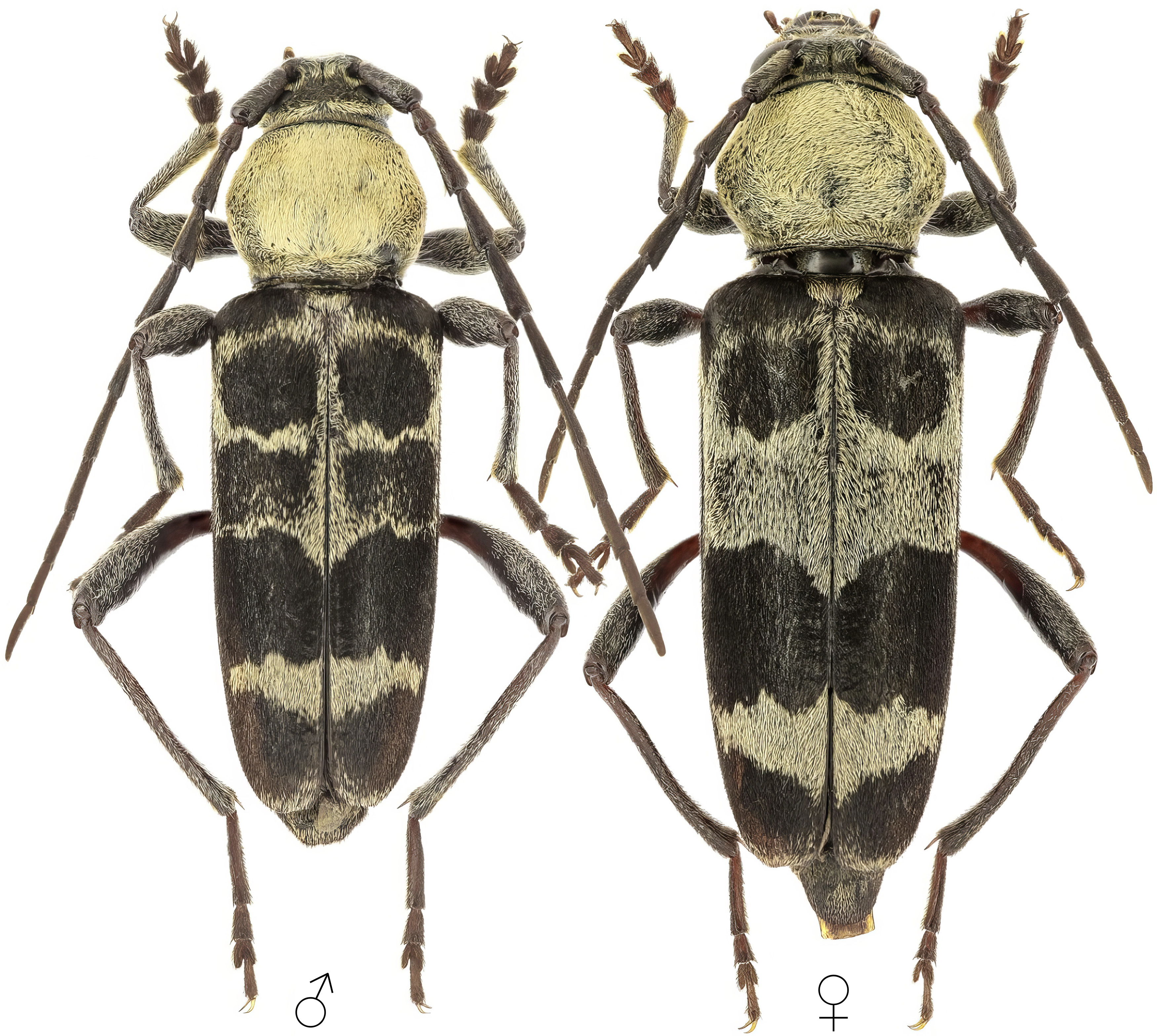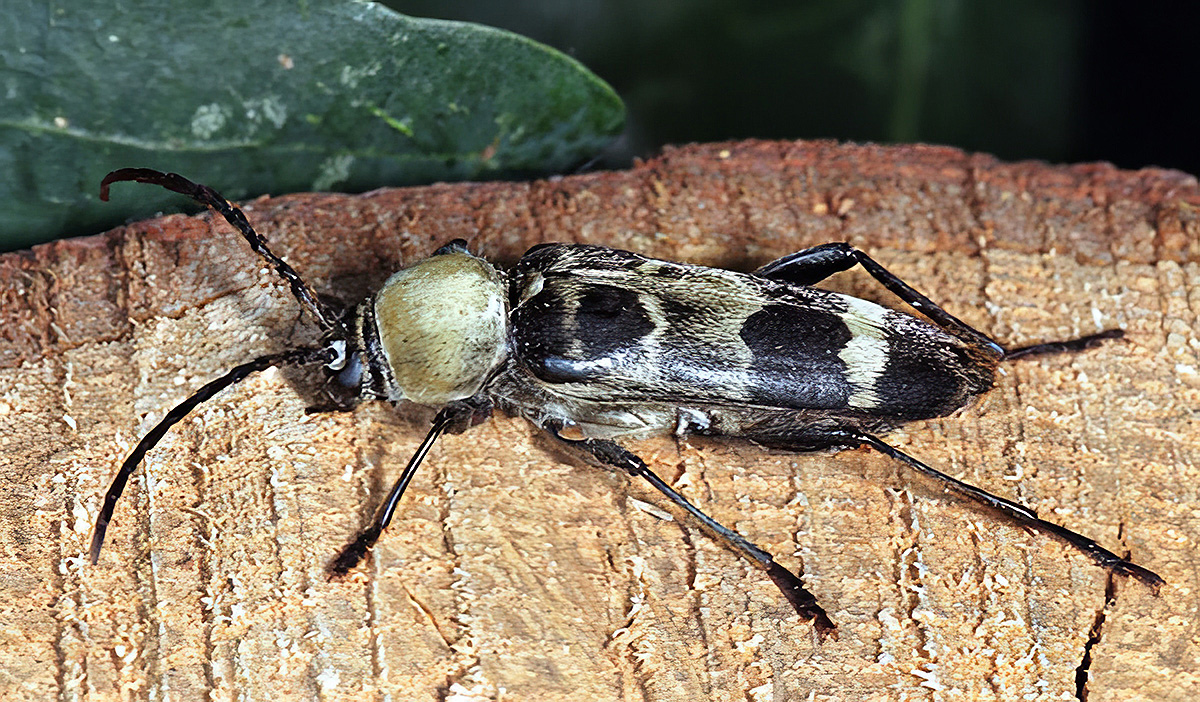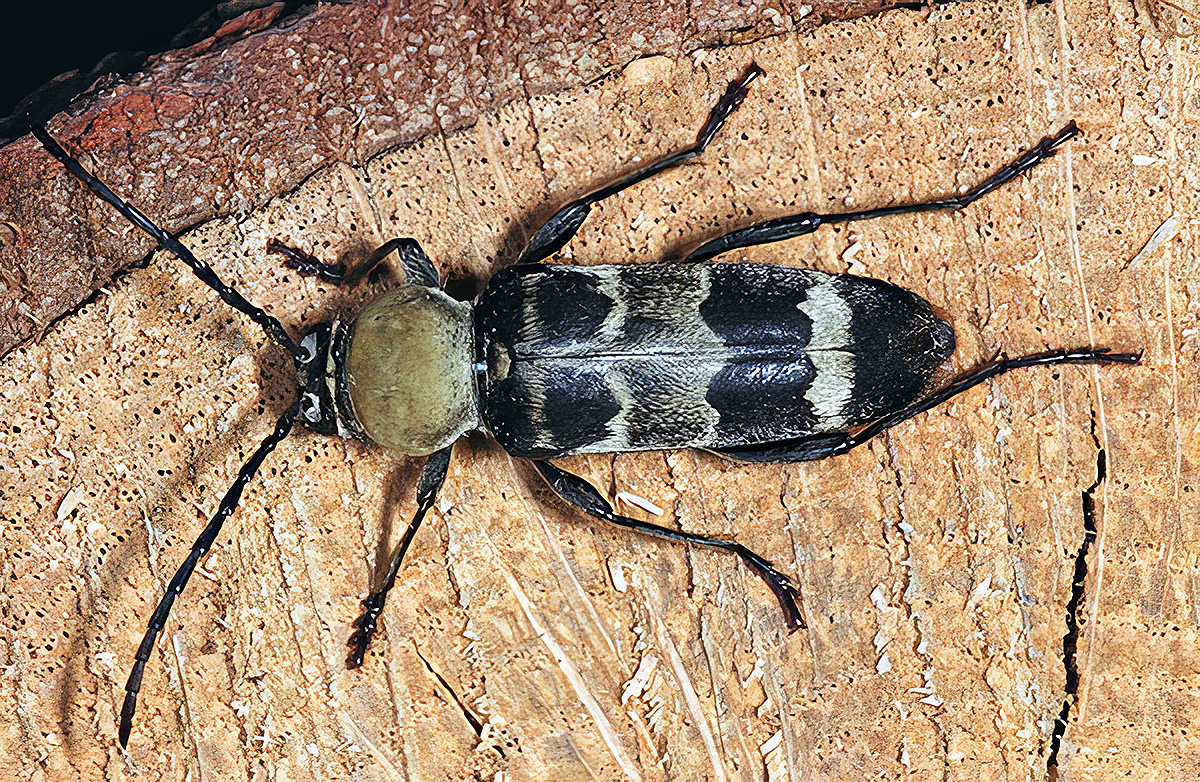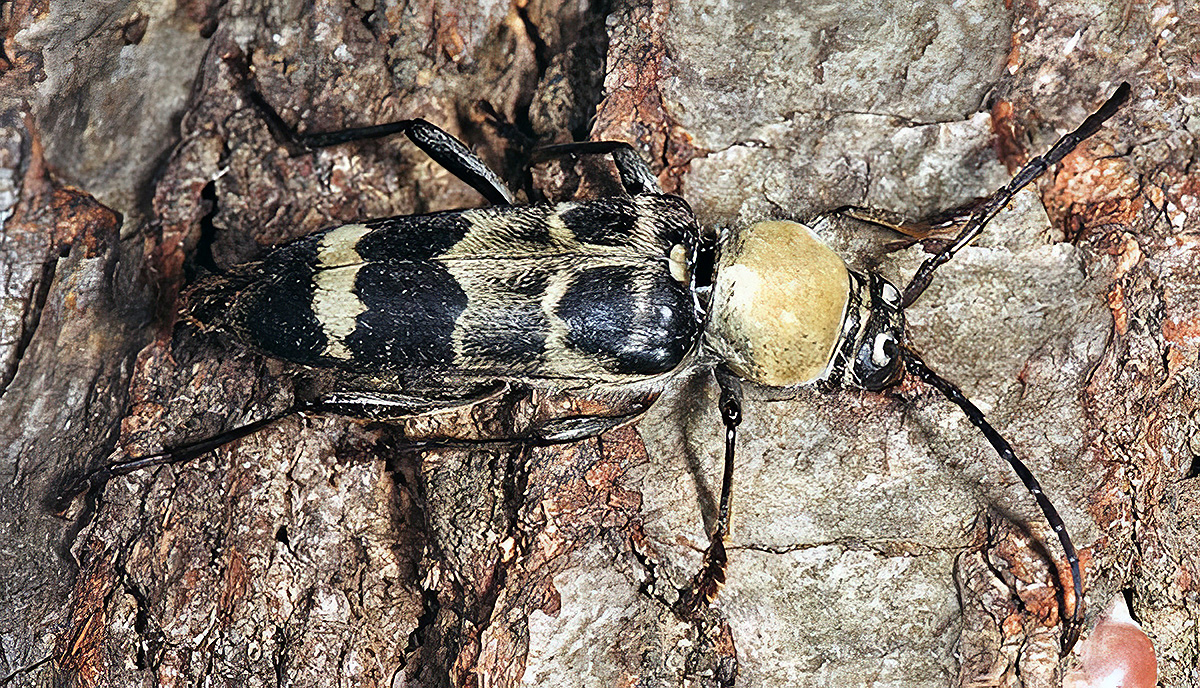[= Clytus Bartholomei Moltschulsky, 1859]
[= Clytus admirabilis Heyden, 1879]
Subfamilia: CERAMBYCINAE / Tribus: CLYTINI

[Photo © Lech Kruszelnicki]
Plagionotus bartholomaei, a rare species with area of occurence restricted to NW Iran and Azerbaijan (Talysh), has been described from Lenkoran (Azerbaijan) environs as Clytus Bartholomei by Victor Ivanovitsch Motschulsky in 1859 [▽]. The host plant of this species is oak (Quercus). The larvae mine under bark in the lower parts of dead trunks or in branches of larger diameter. A high degree of moisture is required. The pupation occurs in sapwood or alternatively under or in the bark. The beetles hatch after two years of development and the adults are crepuscular.
Body length: 11 - 19 mm Life cycle: 1 - 2 years Adults in: April - June Host plant: oaks (Quercus spp.) Distribution: Azerbaijan, Iran
The depicted beetles were reared from a larvae found in Golestan forest 45 km NE Minudast (prov. Khorasan, North Iran).Collected by Lech Kruszelnicki and Martin Rejzek
[▽]
Motschulsky V.I.:
Insectes nouveaux ou peu connus des bassins de la Méditerranée et de la mer Noire jusqu'à la mer Caspienne.
Études Entomologiques 8: 119-144, 1859. [download]



[Photo © Michal Hoskovec, Fuji Superia 400 35 mm film scan]
| Subfamilia | Cerambycinae Latreille, 1802 |
| Tribus | Clytini Mulsant, 1839 |
| Genus | Plagionotus Latreille, 1829 |
| Species | Plagionotus bartholomei (Moltschulsky, 1859) |
